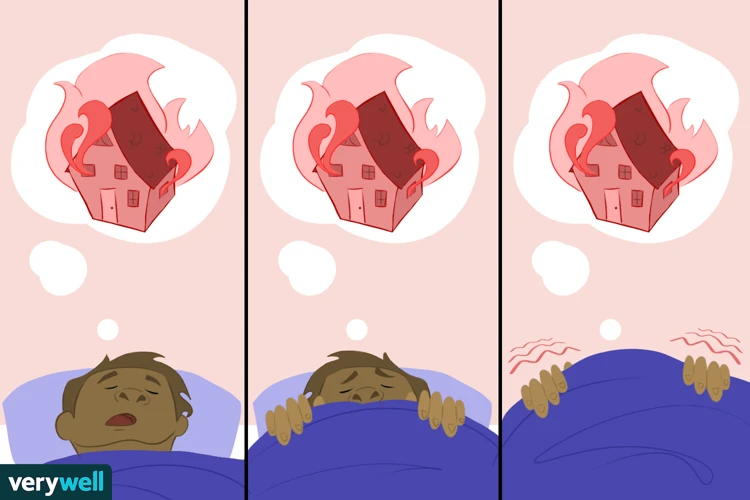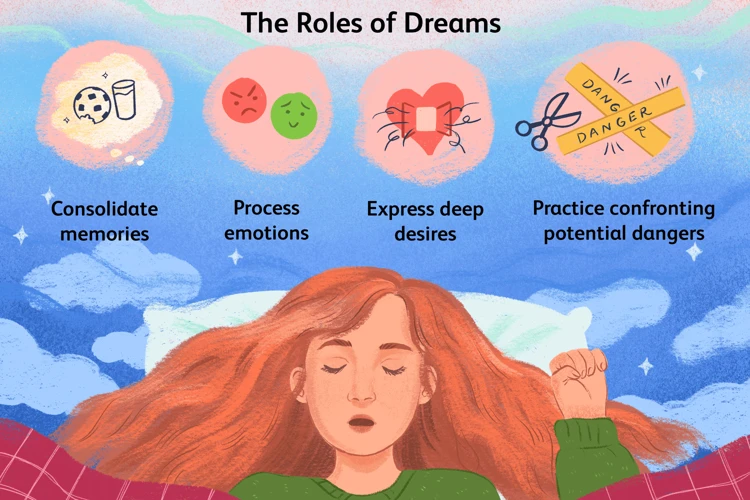Have you ever woken up in the middle of the night, drenched in sweat and overwhelmed by a vivid, terrifying dream? Nightmares can be a distressing experience for anyone, but they can be particularly challenging for children. As a parent, it can be heart-wrenching to see your child struggle with nightmares, especially when you’re unsure of how to help. However, there are steps you can take to support your child through these nighttime terrors. In this article, we will explore the causes of nightmares, signs that indicate your child may be experiencing them, and most importantly, practical strategies to help your child cope. By understanding and addressing their fears, creating a safe sleep environment, and encouraging open communication, you can provide the support and reassurance your child needs to overcome their nightmares and sleep peacefully.
Understanding Nightmares

Nightmares can be unsettling and confusing, especially for children. To understand nightmares, it’s important to recognize what they are and what causes them. Nightmares are vivid and distressing dreams that can evoke intense emotions such as fear, sadness, or anxiety. They often occur during the REM (rapid eye movement) stage of sleep, which is when most dreaming takes place. While occasional nightmares are a normal part of childhood, it is important to be aware of the common causes of nightmares in children. These causes can range from everyday stresses and anxieties to traumatic experiences or unresolved emotional issues. By understanding these factors, you can take steps to support your child and help them navigate their dreamscape. Additionally, it’s worth noting that nightmares play an essential role in processing trauma and can have psychological effects on children that persist into waking life, such as increased anxiety or mood changes.
What are nightmares?
| Nightmares | are vivid and distressing dreams that can cause intense emotions such as fear, sadness, or anxiety. |
| Characteristics | of nightmares often involve scenarios that are frightening, threatening, or uncomfortable. |
| Physical reactions | like increased heart rate, rapid breathing, sweating, or waking up abruptly are common during or after a nightmare. |
| REM sleep stage | is when nightmares typically occur since it is the stage characterized by the most vivid dreaming. |
| Duration | of nightmares can vary, but they typically last a few minutes, and the dreamer can often recall the details upon waking up. |
| Impact on children | can be significant, causing disturbance in their sleep patterns, daytime fatigue, anxiety, and in some cases, leading to the development of psychological effects that can persist into waking life. |
Causes of nightmares in children
Understanding the causes of nightmares in children is crucial in helping them cope with these unsettling experiences. Several factors can contribute to the occurrence of nightmares. One common cause is everyday stress and anxiety. Children may have fears related to school, social interactions, or family issues, and these worries can manifest in their dreams. Additionally, traumatic experiences can trigger nightmares in children. Events such as accidents, medical procedures, or witnessing violence can leave a lasting impact on a child’s subconscious, causing distressing dreams to occur. Sleep disruptions, such as irregular sleep schedules or poor sleep hygiene, can also be a contributing factor. Physical and emotional illness, medications, or changes in routine can disrupt a child’s sleep pattern, leading to vivid nightmares. Finally, it is worth considering that some children may be more prone to nightmares due to their temperament or heightened sensitivity. By recognizing these potential causes, parents can take steps to address and alleviate the underlying factors contributing to their child’s nightmares.
Signs Your Child is Having Nightmares

Nightmares can make a significant impact on a child’s sleep and overall well-being. As a parent or caregiver, it’s essential to be attuned to the signs that indicate your child may be experiencing nightmares. Here are some common indicators to watch out for:
1. Intense fear or distress: If your child wakes up from sleep crying, screaming, or visibly upset, it may be a sign that they have had a nightmare. They may struggle to calm down and have difficulty falling back asleep.
2. Nighttime awakenings: Children who experience nightmares often wake up abruptly during the night. They may call out for a parent or caregiver, seek comfort, or have trouble going back to sleep.
3. Difficulty falling asleep: Fear of experiencing nightmares can make it challenging for children to fall asleep at bedtime. They may complain of feeling scared or anxious, leading to resistance or reluctance to go to bed.
4. Changes in behavior: Nightmares can affect a child’s daytime behavior. They may become more clingy, irritable, or have difficulty concentrating. They may also exhibit signs of fatigue due to disrupted sleep.
5. Recurring themes: If your child frequently talks about the same type of scary dreams or mentions specific characters, objects, or situations that appear in their nightmares, it can be an indication of recurring nightmares.
It’s important to note that while these signs may point to nightmares, they can also be associated with other sleep disturbances or underlying issues. Paying attention to these signs and discussing them with your child can help you better understand their experiences and provide appropriate support.
How to Help Your Child Cope

When your child is experiencing nightmares, it’s natural to want to provide them with the comfort and support they need to cope. Here are some practical strategies you can use to help your child navigate through their unsettling dreams. Create a calming bedtime routine: Establishing a soothing routine before bed can help your child relax and feel more secure. This can include activities like reading a book, listening to soft music, or engaging in a quiet conversation. Provide reassurance and support: Let your child know that they are safe and loved. Offer comforting words, cuddles, or a nightlight to help them feel secure in their sleep environment. Teach relaxation techniques: Introduce relaxation techniques such as deep breathing exercises or progressive muscle relaxation. These techniques can help your child calm down before bed and potentially reduce the frequency or intensity of nightmares. By implementing these strategies, you can provide your child with the tools they need to cope with their nightmares and find peace in their sleep.
Create a calming bedtime routine
Creating a calming bedtime routine can greatly help alleviate your child’s nightmares and promote a peaceful sleep environment. Here are some steps you can take to establish a soothing bedtime routine for your child:
- Consistency: Establish a consistent bedtime and wake-up time for your child. Consistency helps regulate their internal body clock, promoting better sleep quality and reducing the likelihood of nightmares.
- Relaxation activities: Incorporate calming activities into your child’s bedtime routine. This could include activities such as reading a book together, taking a warm bath, or practicing gentle stretching exercises. These activities can help your child unwind and relax before bed.
- Avoid stimulating activities: Limit exposure to screens and electronic devices in the evening, as these can disrupt your child’s sleep patterns. Instead, encourage activities that promote quiet and relaxation, such as listening to soft music or engaging in quiet play.
- Create a cozy sleep environment: Ensure that your child’s bedroom is a comfortable and soothing space. Use soft lighting, cozy bedding, and a comfortable mattress to create an inviting atmosphere. Consider using a nightlight if your child is afraid of the dark.
- Wind down time: Allow for a period of wind-down time before bed, where your child can engage in quiet activities and begin to relax. This can help transition their body and mind from the busyness of the day to a state of calmness before sleep.
By following these steps and implementing a consistent and calming bedtime routine, you can create an environment that promotes a sense of security and peace for your child, reducing the occurrences of nightmares and facilitating a restful night’s sleep.
Provide reassurance and support
When your child wakes up from a nightmare, it’s important to provide them with reassurance and support to help them feel safe and secure. Here are some ways you can offer comfort to your child:
- Show empathy: Start by acknowledging your child’s emotions and let them know that their feelings are valid. Reassure them that nightmares are a normal part of growing up and that you are there to help them through it.
- Offer physical comfort: Physical touch can be soothing and reassuring for children. Hug them, cuddle them, or hold their hand to let them feel your presence and support.
- Stay with them: If your child is scared, stay with them until they feel calmer and more secure. This can help them feel protected and prevent any lingering fear or anxiety.
- Provide a nightlight: A nightlight can help alleviate your child’s fear of the dark. It provides a sense of comfort and adds a gentle glow to their room, making it feel less intimidating.
- Encourage positive thoughts: Help your child redirect their focus from the nightmare to something positive. Talk about happy memories or engage in a calming activity together, such as reading a favorite book or listening to soothing music.
Remember, patience and understanding are key when providing reassurance and support to your child. By creating a supportive environment, you can help them feel safe and gradually overcome their fear of nightmares.
Teach relaxation techniques
Teaching your child relaxation techniques can be a valuable tool in helping them cope with nightmares. By teaching your child these techniques, you are empowering them to actively manage their anxiety and promote a sense of calmness. One effective relaxation technique is deep breathing. Encourage your child to take slow, deep breaths in through their nose and exhale slowly through their mouth. This simple act can help regulate their heart rate and bring a sense of relaxation to their body. Another technique is progressive muscle relaxation. Guide your child through tensing and relaxing different muscle groups, starting from their toes and working their way up to their head. This exercise helps release tension and promotes overall relaxation. Additionally, mindfulness exercises can help your child shift their focus away from their fears and into the present moment. These exercises can include guided imagery or meditation techniques where they visualize a peaceful and calming place. It’s important to practice these techniques together with your child during the daytime so that they become familiar with them and can use them independently when they wake up from a nightmare.
Creating a Safe Sleep Environment

Creating a safe sleep environment is crucial for helping your child cope with nightmares. Addressing their fears and anxieties is the first step in creating a comforting bedtime setting. Listen actively to your child’s concerns and validate their emotions. By acknowledging their fears, you can help them feel understood and supported. Consider implementing a bedtime routine that promotes relaxation and calmness. This could include activities such as reading a soothing bedtime story, practicing deep breathing exercises, or using a night light if it brings them comfort. Additionally, setting up a comforting bedtime environment can make a significant difference. Make sure their bedroom is a safe and cozy space, free from any unsettling or frightening objects. Providing a familiar and comforting sleep environment will help your child feel secure and reduce the likelihood of nightmares interrupting their restful sleep.
Addressing fears and anxieties
- Talk openly about fears: Encourage your child to express their fears and anxieties by creating a safe and non-judgmental space for them to share. Let them know that it’s normal to feel scared or anxious sometimes and that you are there to listen and support them.
- Validate their feelings: Show empathy and understanding towards your child’s fears. Let them know that their feelings are valid and that you take their concerns seriously. Reassure them that it’s okay to feel scared, but also remind them that they are safe.
- Provide age-appropriate information: Depending on your child’s age and maturity level, provide them with age-appropriate information about the things they fear. Explain that the things they see in their dreams are not real and help them differentiate between fantasy and reality.
- Teach coping strategies: Help your child develop coping strategies to manage their fears and anxieties. This can include deep breathing exercises, practicing positive self-talk, or using visualization techniques to imagine a safe and comforting place.
- Create a comfort object: Encourage your child to choose a comfort object, such as a stuffed animal or a special blanket, that they can keep with them at night. This object can provide them with a sense of security and comfort when they are feeling scared.
Setting up a comforting bedtime environment
- Remove distractions: Create a peaceful atmosphere in your child’s bedroom by removing any distractions that may disrupt their sleep. This can include electronics, bright lights, or loud noises. Instead, consider using soft, dim lighting and playing soothing music or white noise to create a calming ambiance.
- Add comforting elements: Incorporate comforting elements into your child’s bedtime routine, such as a cozy blanket, stuffed animals, or a favorite toy. These familiar items can provide a sense of security and comfort, helping your child feel safe and relaxed before drifting off to sleep.
- Keep the room at a comfortable temperature: Adjust the temperature in your child’s bedroom to ensure it is neither too hot nor too cold. A cool and comfortable environment can promote better sleep quality and reduce the likelihood of nightmares.
- Establish a consistent sleep schedule: Consistency is key when it comes to setting up a comforting bedtime environment. Establish a regular sleep schedule for your child, with consistent bedtimes and wake-up times. This helps regulate their biological clock and promotes better sleep patterns.
- Create a relaxing bedtime routine: Develop a soothing bedtime routine that includes calming activities such as reading a bedtime story, taking a warm bath, or practicing gentle stretches. This routine signals to your child’s body and mind that it’s time to unwind and prepare for sleep.
Encouraging Communication

Encouraging open communication with your child is crucial when it comes to understanding their dreams and nightmares. By actively listening to your child when they express their fears and anxieties, you can create a safe space for them to share their experiences. It’s important not to dismiss their feelings or brush off their concerns. Instead, validate their emotions and provide reassurance that you are there to support them. By listening actively, you can gain valuable insights into their dreams and nightmares, which can help you better understand their underlying emotions and concerns. You can encourage your child to engage in dialogue about their dreams and nightmares, allowing them to express themselves freely without judgment. This open conversation can help them process their experiences and potentially find solutions for managing their fears. It’s important to create an environment where your child feels comfortable discussing their dreams and offering them guidance and support along the way.
Listen actively to your child
When your child is experiencing nightmares, one of the most important things you can do is listen actively to them. By creating a safe and non-judgmental space for them to express their fears and emotions, you are helping them process and make sense of their nightmares. Actively listening means giving your child your undivided attention and showing genuine interest in what they have to say. Let them know that you are there to support and understand them.
During these conversations, it’s crucial to resist the urge to dismiss or minimize their feelings. Instead, validate their experiences and let them know that their emotions are valid. Reflect back what they say, using phrases like, “It sounds like you were really scared in your dream,” or “I can see why that would be upsetting for you.” This shows empathy and helps your child feel understood.
As you actively listen, pay attention to any recurring themes or patterns in their nightmares. This information can provide valuable insights into their fears and anxieties. By understanding these underlying concerns, you can better support your child in managing their nightmares.
Remember, active listening is not just about hearing the words your child says; it’s about truly understanding and acknowledging their emotions. By creating a nurturing and supportive environment through active listening, you can help your child feel safe and supported in their journey of coping with nightmares.
Encourage open dialogue about dreams and nightmares
- Discuss dreams and nightmares: Encouraging open dialogue about dreams and nightmares is crucial in helping your child cope with their nighttime experiences. Take the time to ask your child about their dreams and show genuine interest in their responses. This sends the message that you value their thoughts and emotions. Create a safe and non-judgmental space for them to share their dreams, even if they seem silly or irrational. By normalizing the discussion around dreams, you can help your child feel comfortable and open about their experiences.
- Validate their feelings: When your child shares their dreams or nightmares, validate their feelings by acknowledging that their emotions are real and understandable. Let them know that it’s okay to feel scared or upset after a nightmare and that many people experience similar emotions. This validation can provide reassurance and help your child feel understood and supported.
- Ask open-ended questions: Instead of asking simple yes or no questions, try to ask open-ended questions that encourage your child to express themselves more fully. For example, you can ask, “What do you think your dream was trying to tell you?” or “How did you feel when you woke up from that nightmare?” These types of questions invite your child to reflect on their dreams and share their thoughts and emotions.
- Offer reassurance: If your child shares a particularly distressing nightmare, offer reassurance and comfort. Let them know that nightmares are not real and cannot harm them. Reiterate that they are safe and loved. You can also offer to stay with them until they feel calm and fall back asleep. This support can help alleviate any lingering fear or anxiety your child may have.
- Keep the conversation ongoing: Encouraging open dialogue about dreams and nightmares should be an ongoing process. Make it a habit to regularly check in with your child about their dreams and provide opportunities for discussion. By maintaining this open line of communication, you can better understand your child’s fears and anxieties and address them in a timely manner.
When to Seek Professional Help
- Persistent and worsening nightmares: If your child’s nightmares persist over an extended period and seem to be getting worse, it may be time to seek professional help. Chronic nightmares can indicate underlying emotional or psychological issues that may require intervention from a mental health professional.
- Impact on daily functioning: If your child’s nightmares begin to affect their daily functioning, such as their ability to concentrate at school, interact with peers, or perform daily tasks, it is essential to consult with a professional. They can assess the situation and provide appropriate guidance or treatment options.
- Intense fear and distress: If your child’s nightmares are accompanied by intense fear, distress, or panic, it is crucial to consider professional support. These intense emotional reactions may be indicators of an underlying anxiety disorder or trauma that requires specialized help.
- Sleep disturbances: If your child’s nightmares significantly disrupt their sleep, causing frequent awakenings, difficulty falling back asleep, or a fear of going to sleep altogether, professional intervention may be necessary. Sleep disturbances can impact your child’s overall well-being and may require the expertise of a sleep specialist.
- Self-harm or suicidal thoughts: If your child experiences nightmares that lead to self-harm behaviors or expressed thoughts of self-harm or suicide, it is essential to seek immediate professional help. Reach out to a mental health provider or contact a helpline or emergency services for immediate assistance.
Remember, as a parent, you know your child best. If you have any concerns about your child’s well-being or their ability to cope with their nightmares, it is always better to err on the side of caution and seek professional help. Mental health professionals can provide expert guidance, evaluate the situation, and offer appropriate treatment options tailored to your child’s needs.
Conclusion
In conclusion, helping your child cope with nightmares is an essential part of their overall well-being. By creating a calming bedtime routine, providing reassurance and support, and teaching relaxation techniques, you can empower your child to navigate their dreams and sleep more peacefully. Additionally, addressing their fears and anxieties, and setting up a comforting bedtime environment can contribute to a sense of safety and security. Encouraging open communication with your child about their dreams and nightmares can also foster a deeper understanding of their experiences. Remember, occasional nightmares are a normal part of childhood, but if your child consistently experiences intense or recurring nightmares that disrupt their daily life, it may be necessary to seek professional help. Consulting with a pediatrician or mental health professional can provide you with additional guidance and support in ensuring your child’s emotional well-being. By taking these steps, you can help your child overcome their nightmares and enjoy restful, rejuvenating sleep.
Frequently Asked Questions
What are the common triggers for nightmares in children?
Common triggers for nightmares in children include stress, anxiety, changes in routine, fear of the dark, scary movies or stories, and traumatic experiences.
Are nightmares a sign of a psychological problem?
Nightmares are not always a sign of a psychological problem. They are a normal part of childhood and can be caused by a variety of factors. However, if nightmares persist or significantly impact your child’s daily life, it may be wise to consult a healthcare professional.
How can a calming bedtime routine help reduce nightmares?
A calming bedtime routine can create a sense of security and relaxation for your child, making it easier for them to fall asleep and reducing the likelihood of nightmares. This routine can include activities like reading a book, taking a warm bath, or practicing deep breathing exercises.
What can I do to provide reassurance and support to my child after a nightmare?
After a nightmare, it’s important to offer comfort and reassurance to your child. Stay calm and validate their feelings, letting them know that nightmares are common and temporary. Offer them a comforting presence, such as a hug or sharing a comforting story, and encourage them to go back to sleep.
How can I teach relaxation techniques to my child to help them cope with nightmares?
You can teach your child relaxation techniques such as deep breathing exercises, progressive muscle relaxation, or visualization. These techniques can help calm their mind and body before bedtime, reducing the likelihood of nightmares and promoting restful sleep.
What can I do to address my child’s fears and anxieties before bedtime?
To address your child’s fears and anxieties before bedtime, encourage them to talk about their feelings and concerns. Offer reassurance and help them explore coping strategies, such as using a nightlight, having a security object, or discussing their worries in a journal.
How can I create a comforting bedtime environment for my child?
You can create a comforting bedtime environment by ensuring the room is dark, quiet, and at a comfortable temperature. Use soothing colors and soft lighting, and consider using white noise machines or calming music to create a peaceful atmosphere.
Why is active listening important when my child wants to talk about their nightmares?
Active listening is important when your child wants to talk about their nightmares because it shows that you are present and engaged in the conversation. It helps your child feel heard and understood, and it encourages them to open up and share their thoughts and feelings.
How can I encourage open dialogue about dreams and nightmares with my child?
You can encourage open dialogue about dreams and nightmares by asking open-ended questions about their dreams, showing curiosity and interest, and creating a safe and non-judgmental space for them to share their experiences. Avoid dismissing or invalidating their feelings, even if their dreams seem irrational.
When should I seek professional help for my child’s nightmares?
If your child’s nightmares are causing significant distress, interfering with their daily functioning, or persisting for an extended period of time, it may be advisable to seek professional help. A healthcare professional or mental health provider can assess the situation and provide appropriate guidance and support.








